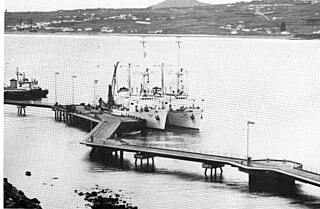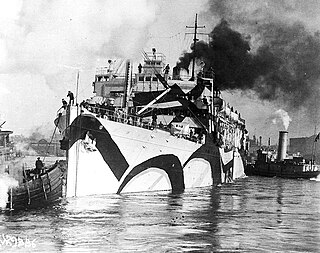 W
WUSNS Sands (T-AGOR-6) was a Robert D. Conrad-class oceanographic research ship operated by the Military Sealift Command (MSC) for the Naval Oceanographic Office from 1965 to 1973. During that period she provided ocean-bottom information and underwater test data to the U.S. Navy and other U.S. agencies. The ship was the second naval vessel to be named for Rear Admiral Benjamin F. Sands and his son Rear Admiral James H. Sands, the first being the destroyer Sands (DD-243). The ship operated in the Atlantic on oceanographic and geophysical assignments for the Oceanographic Office and other agencies.
 W
WUSS Cayuga (LST-1186) was a Newport-class tank landing ship of the United States Navy which replaced the traditional bow door-design tank landing ships (LSTs). The vessel was constructed by the National Steel and Shipbuilding Company in San Diego, California and was launched in 1969 and commissioned in 1970. Cayuga took part in the Vietnam War and Gulf War in American service. Decommissioned in 1994, the LST was transferred to the Brazilian Navy the same year on loan and renamed NDCC Mattoso Maia . The ship was purchased by Brazil outright in 2001. Mattoso Maia is currently in service.
 W
WUSS Grant County (LST-1174) was a De Soto County-class tank landing ship built for the United States Navy during the late 1950s. Named after counties in fifteen states, she was the only U.S. Naval vessel to bear the name.
 W
WUSS Orizaba (ID-1536/AP-24) was a transport ship for the United States Navy in both World War I and World War II. She was the sister ship of Siboney but the two were not part of a ship class. In her varied career, she was also known as USAT Orizaba in service for the United States Army, and as SS Orizaba in interwar civilian service for the Ward Line, and as Duque de Caxias (U-11) as an auxiliary in the Brazilian Navy after World War II.
 W
WUSS Skylark (ASR-20) was a Penguin-class submarine rescue ship of the United States Navy.
 W
WUSS Grant County (LST-1174) was a De Soto County-class tank landing ship built for the United States Navy during the late 1950s. Named after counties in fifteen states, she was the only U.S. Naval vessel to bear the name.
 W
WUSS LST-920 was an LST-542-class tank landing ship in the United States Navy. Like many of her class, she was not named and is properly referred to by her hull designation.
 W
WUSS Cayuga (LST-1186) was a Newport-class tank landing ship of the United States Navy which replaced the traditional bow door-design tank landing ships (LSTs). The vessel was constructed by the National Steel and Shipbuilding Company in San Diego, California and was launched in 1969 and commissioned in 1970. Cayuga took part in the Vietnam War and Gulf War in American service. Decommissioned in 1994, the LST was transferred to the Brazilian Navy the same year on loan and renamed NDCC Mattoso Maia . The ship was purchased by Brazil outright in 2001. Mattoso Maia is currently in service.
 W
WUSS Orizaba (ID-1536/AP-24) was a transport ship for the United States Navy in both World War I and World War II. She was the sister ship of Siboney but the two were not part of a ship class. In her varied career, she was also known as USAT Orizaba in service for the United States Army, and as SS Orizaba in interwar civilian service for the Ward Line, and as Duque de Caxias (U-11) as an auxiliary in the Brazilian Navy after World War II.
 W
WUSNS Sands (T-AGOR-6) was a Robert D. Conrad-class oceanographic research ship operated by the Military Sealift Command (MSC) for the Naval Oceanographic Office from 1965 to 1973. During that period she provided ocean-bottom information and underwater test data to the U.S. Navy and other U.S. agencies. The ship was the second naval vessel to be named for Rear Admiral Benjamin F. Sands and his son Rear Admiral James H. Sands, the first being the destroyer Sands (DD-243). The ship operated in the Atlantic on oceanographic and geophysical assignments for the Oceanographic Office and other agencies.
 W
WUSS Skylark (ASR-20) was a Penguin-class submarine rescue ship of the United States Navy.